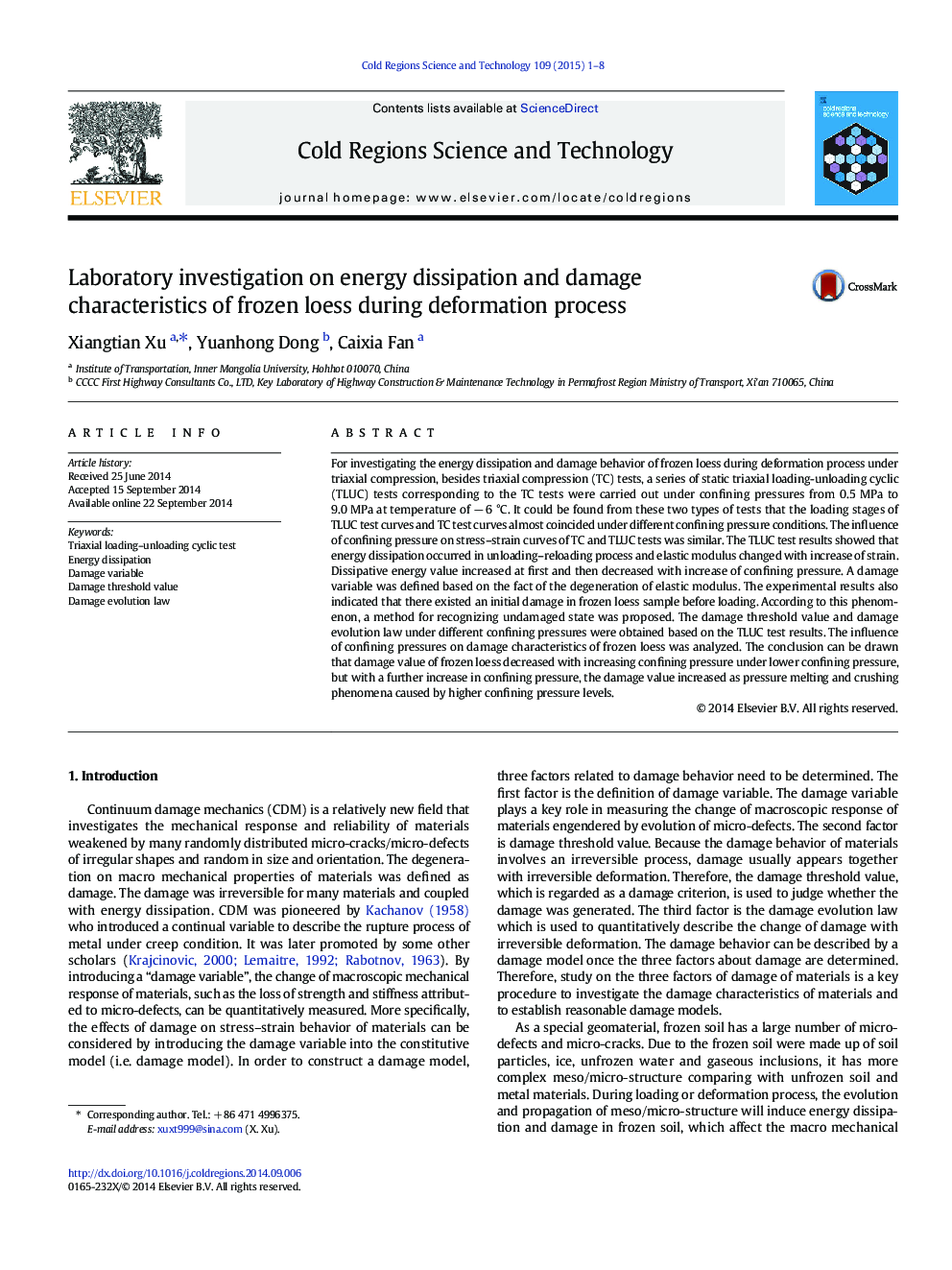| Article ID | Journal | Published Year | Pages | File Type |
|---|---|---|---|---|
| 6426906 | Cold Regions Science and Technology | 2015 | 8 Pages |
â¢TLUC test was applied to investigate energy dissipation of frozen loess.â¢A damage variable was defined based on deterioration of elastic modulus.â¢A method for recognizing undamaged state was proposed.â¢Damage evolution law of frozen loess was obtained.â¢Influence of confining pressure on damage behavior was analyzed.
For investigating the energy dissipation and damage behavior of frozen loess during deformation process under triaxial compression, besides triaxial compression (TC) tests, a series of static triaxial loading-unloading cyclic (TLUC) tests corresponding to the TC tests were carried out under confining pressures from 0.5 MPa to 9.0 MPa at temperature of â 6 °C. It could be found from these two types of tests that the loading stages of TLUC test curves and TC test curves almost coincided under different confining pressure conditions. The influence of confining pressure on stress-strain curves of TC and TLUC tests was similar. The TLUC test results showed that energy dissipation occurred in unloading-reloading process and elastic modulus changed with increase of strain. Dissipative energy value increased at first and then decreased with increase of confining pressure. A damage variable was defined based on the fact of the degeneration of elastic modulus. The experimental results also indicated that there existed an initial damage in frozen loess sample before loading. According to this phenomenon, a method for recognizing undamaged state was proposed. The damage threshold value and damage evolution law under different confining pressures were obtained based on the TLUC test results. The influence of confining pressures on damage characteristics of frozen loess was analyzed. The conclusion can be drawn that damage value of frozen loess decreased with increasing confining pressure under lower confining pressure, but with a further increase in confining pressure, the damage value increased as pressure melting and crushing phenomena caused by higher confining pressure levels.
